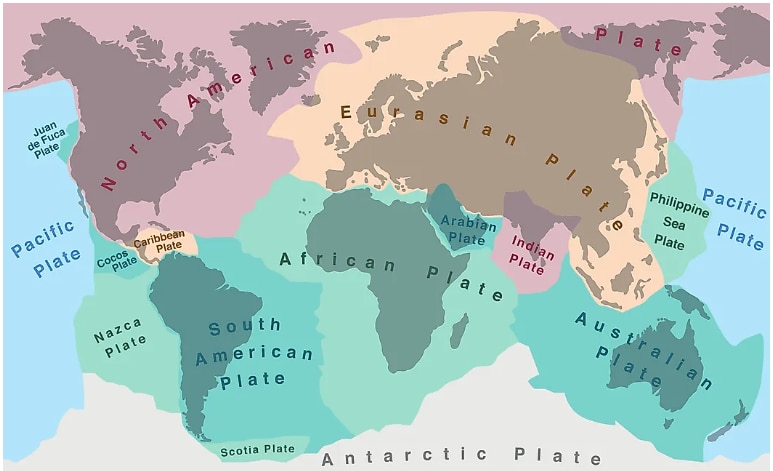North India tremors are all a sign that a Great Himalayan Earthquake is just round the corner

Earthquake in Afghanistan, tremors felt in India. Photo: USGS
On the night of March 21, North Indian cities saw more than usual people in societies and colonies hurrying down the stairs and leaving their homes. This was because of what many described intense and sustained tremors they felt.
Turns out, there was an earthquake measuring 6.5 on the Richter scale that originated in Afghanistan. Tremors were felt in several Pakistani and Indian cities. In India, people in Jaipur, Amritsar, Delhi, Noida, Srinagar, etc, mostly in northwestern parts, reported intense tremors.

What do we know about the earthquake?
- The US Geological Survey reported that a 6.5 magnitude earthquake struck 40 km southeast of Jurm in Afghanistan near the border with Tajikistan.
- The earthquake was deep; about 187.6 km below the earth's surface, one of the reasons why the tremors were felt over a long distance in parts of Tajikistan, Pakistan, and India.
Exclusive: Man who predicted Turkey and Syria quake, Frank Hoogerbeets, spoke to India Today #Earthquake | @AishPaliwal @Milan_reports pic.twitter.com/DBhl2J4PZn
— IndiaToday (@IndiaToday) March 21, 2023
- Shallow earthquakes, like the one recently in Turkey and Syria (just 10 km deep), are devastating, as the energy they release emerges more intensely on the surface.
- However, with deeper earthquakes, the quakes spread farther, and the seismic waves lose energy as they come to the surface. This is why no great damage was reported in India.
- The earthquake originated in the Hindu Kush mountain range, which is prone to earthquakes.
Casualties:
- In India, no in injuries, loss of life, or damage to property were reported. There was only a false alarm of building damage in Delhi.
My House shook like this👇 #earthquake pic.twitter.com/2dRKpDHnlV
— richa anirudh (@richaanirudh) March 21, 2023
- In Pakistan, at least three people have died and some 41 have been injured in the Khyber Pakhtunkhwa province. Landslides were also reported in Abbottabad.
- Landslides were reported in Tajikistan in areas nearing Afghanistan.
- At least two people have died in Afghanistan. However, there are fears of more casualties as a clearer picture emerges.

- The Associated Press said that at least 11 people have died in Afghanistan and Pakistan combined.
The last horrifying earthquake in Afghanistan occurred in June 2022. A 6.1 magnitude earthquake in southeastern Afghanistan killed over 1,000 people. Similar earthquakes in Afghanistan have killed thousands of people over the years.
#Earthquake | Follow these do's and don'ts to ensure your safety before, during and after an #Earthquake. pic.twitter.com/j1favudlum
— NDMA India | राष्ट्रीय आपदा प्रबंधन प्राधिकरण 🇮🇳 (@ndmaindia) March 21, 2023
The Great Himalayan Earthquake:
- For a long time, scientists have said that a Great Himalayan Earthquake is long overdue; and by long we mean centuries. It is also inevitable.
- And several major Indian cities like Delhi and Gurugram sit precariously over fault lines, even though no major earthquake has struck the areas in modern history.
- You see, the western Himalayas continues to be one of the most dangerous and active seismic zones in the world.
- The inevitable great earthquake can strike anywhere between the Hindu Kush mountain range in Afghanistan and the end of Arunachal Pradesh in India.
- This is because the Indo-Australian tectonic plate is in collision with the Eurasian plate, which is also the reason for the creation of the Himalayas.

- In the past 500 years, there has not been an earthquake over magnitude 8; even though lesser magnitude earthquakes have caused much damage, like the 2015 Nepal quake and the 2005 Jammu and Kashmir quake, mostly affecting Pakistan-administered areas.
- This means that there is a great amount of pent-up energy caused by the friction between the two tectonic plates, which can only be released in the form of a massive earthquake.
- The central Himalayan region is even more prone to earthquakes because of a seismic gap, which is an absence of a massive earthquake.
- Usually, strong earthquakes have a seismic cycle. If a magnitude 7 earthquake strikes one region, it takes a decade for the same magnitude earthquake to strike again.
- So, this Himalayan region is overdue for a magnitude 8 earthquake.

